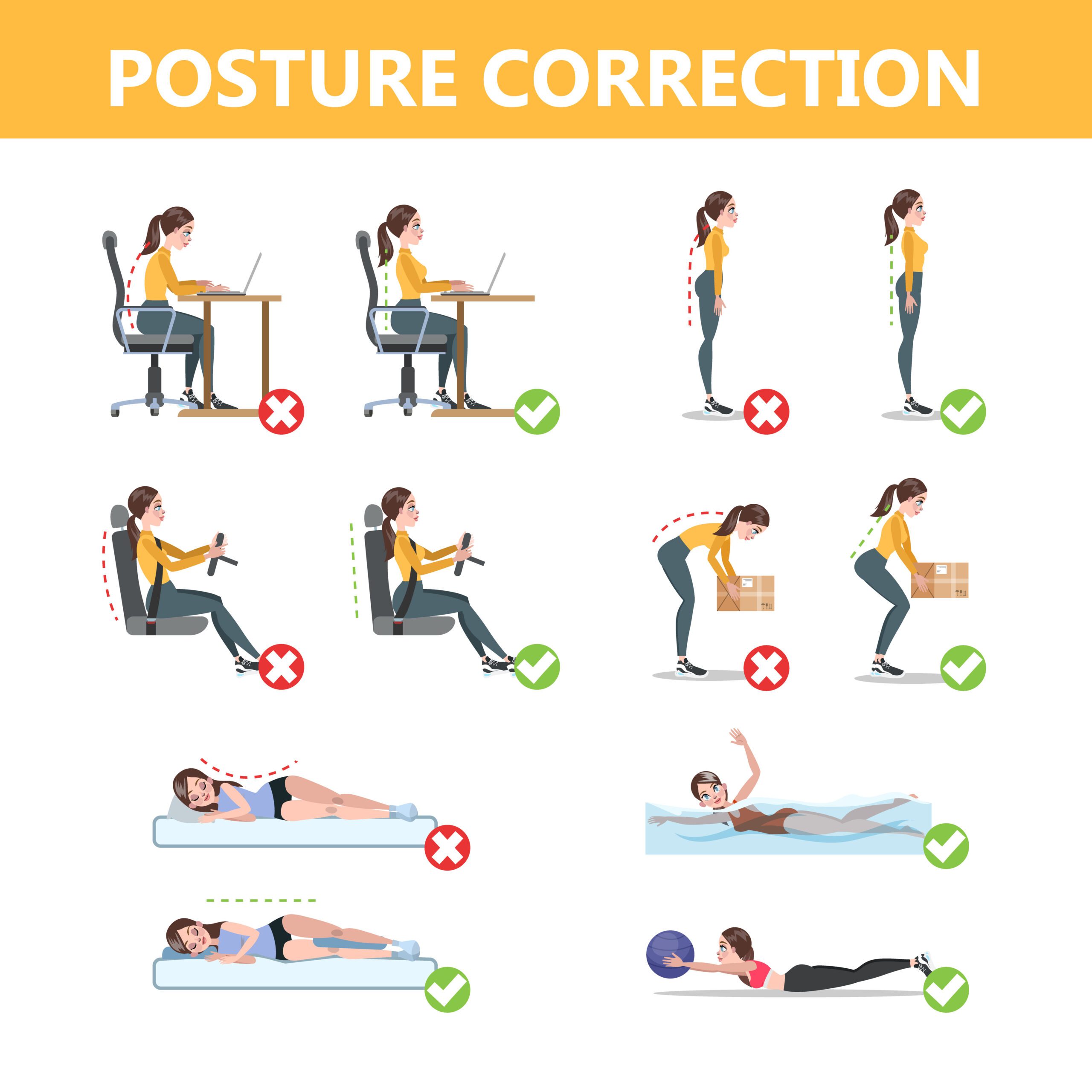4 Important Posture Tips for a Pain-Free Back
August 12, 2017
 899
899 
Do you remember the days when your mom would incessantly tell you to sit up straight and “for pete’s sake quit slouching!”? Turns out, she knew what she was talking about when it comes to pain-free posture. Back pain can be one of the worst and most uncomfortable experiences for anyone – if you’ve ever experienced it, you know the feeling. Fortunately there are simple tips you can use not only to ensure good posture, but also prevent back pain.
Good posture comes with great benefits, and there are a number of tips to ensure the best posture while doing various activities. Whether you’re sitting in front of the computer, driving, lifting heavy objects, or simply walking, it’s essential to practice proper posture so as to not injure yourself.
1. Standing
While standing, in order to promote a healthy posture and back you are recommended to keep your feet a comfortable distance apart, no more than the breadth of the shoulders or hips, with even weight distribution over both legs and feet. You should also align your head, shoulders and pelvis in a straight vertical line, which in turn will lead to a “balancing” effect on the back and neck. By doing this your head will feel like it is in more of a natural position without having to tilt or straighten it consciously.
If you are prone to standing for prolonged periods of time, due to work conditions or other situations, it is recommended to raise one foot onto a short foot rest. If you need extra support while standing and leaning forward, support yourself with a hand on a counter or table, remembering to keep your head raised (almost extended) to straighten the spine.
2. Sitting
It’s often your natural tendency is to slouch when sitting. To counter this, you need to correctly position your pelvis in a stable position. This is accomplished by ensuring your back is up against the base of the chair and then following through in an upright, comfortable position. Once your pelvis is supporting the weight from above, you will notice that it is much easier to maintain that straight posture and it is more comfortable.
3. Walking
When walking, one of the first issues for good posture is shoes. Low heeled shoes, with sufficient arch support and flexible soles are key to comfort. Shoes that are too constricting, however, can contribute significantly to inadequate and unhealthy posture habits that are not conducive to a healthy back. Once you have taken the recommended standing position into account, the walking part essentially follows naturally. You should walk without tensing, while keeping your pelvis and head level. Your head should almost feel like it is floating when held up correctly. Pay specific attention to your footsteps — avoiding “stomping” down, but rather landing softly on the heel, transferring onto the ball of the foot and then onto the toes.
4. Lifting
Pay special attention to your position when lifting objects. Even lighter objects should be lifted with knee actions and not back-bending actions. If your job or situation requires a great deal of heavy lifting, you might want to invest in a back support or other related equipment. An injury to your back can often contribute to a more severe debilitation, affecting your ability to work and function correctly.
It’s important to take care of your back, and having good posture is one way to ensure you’re pain-free now and down the road. By following the above advice you can prevent the aches and strain associated with a bad back.

A new study suggests that a widely used sugar substitute found in diet sodas, chewing gum, and low-sugar yogurt may elevate insulin levels. This could increase the long-term risk of heart disease. “Artificial sweeteners have infiltrated nearly all types of food, making it crucial to understand their long-term health effects,” said Yihai Cao, senior author […]

Diet Coke has long been a fan-favorite among soda lovers who want a fizzy, guilt-free alternative to traditional soft drinks. While its zero-calorie, zero-sugar label makes it seem like a healthier option, the reality is far more concerning. Despite its undeniable popularity, Diet Coke’s nutritional profile has raised red flags among health experts for years. […]

New study shows that embracing an anti-inflammatory, plant-forward diet can support cognitive function and help reduce the risk of dementia. What You Eat Shapes Your Brain The food you eat doesn’t just impact your body—it also affects your brain. Research suggests that eating an anti-inflammatory, plant-based diet can help improve memory, focus, and overall brain […]